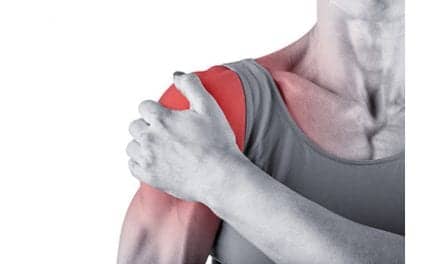While it may be a good thing for rheumatoid arthritis patients to keep moving, some researchers believe that intense exercise can make things worse, MedPage Today reports.
A 2019 study out of Belgium published in Annals of Rheumatic Disease by Isabelle Cambré of VIB Discovery Sciences in Flanders, Belgium, and colleagues set out to determine if voluntary running had an impact on the chronicity of arthritis.
“We unraveled a crucial role for the complement pathway in the exacerbation in onset of arthritis induced by voluntary running. Complement activators were locally induced within joints, and inhibition thereof markedly attenuated disease,” according to the study authors.
They note that a feature of rheumatoid arthritis is its impact on the most mobile joints of the body, including knee and ankle, and on tendons.
“An interesting hallmark of these structures is that they have to withstand high exposure to biomechanical stresses. This suggests that biomechanical stress could impact the clinical features of these diseases,” Cambré and colleagues continue.
The researchers approached the topic based on studies which suggest that high-intensity physical activity can be linked to structural progression in ankylosing spondylitis and the risk of anti-citrullinated protein antibody (ACPA)-positive and ACPA-negative RA.
“In addition, in certain patient populations, physical exercise may lead to an increase of disease flares. Thus, biomechanical stress may trigger the onset or influence the course of joint inflammation,” the authors wrote.
However, they believed the underlying mechanisms of strain on joint inflammation were poorly defined.
“We therefore investigated the impact of different loading regimens (hindlimb unloading vs voluntary running vs control conditions) in a passive arthritis model,” Cambré and colleagues wrote.
The researchers used mice for the test and found that high-impact did indeed have an effect, MedPage Today continues.
“Voluntary running induced a strong and significant upregulation of several complement components both in healthy and TNF∆ARE mice compared with control conditions,” the authors write.
“The data suggest that stimulation of complement pathways takes place under running conditions, potentially by direct activation of both the classical pathway, by increase of its initiating molecule C1q which binds Ab complexes, and the alternative pathway.”
Their research could have an impact on physical activity recommendations for patients with early and late-stage rheumatoid arthritis, they note.
But while extreme running may be off the table for rheumatoid arthritis patients, the exercise is not completely off the table if done in the right conditions, such as running on a treadmill, according to a 2018 study published in the International Journal of Molecular Sciences.
“In this study, treadmill running in CIA rats decreased pro-inflammatory cytokines and the number of TRAP-positive cells, resulting in suppression of bone loss,” authors Seiji Shimomura, et al, wrote, in the study. “Production of TNF-α and Cx43 in synovitis in CIA rats may be inhibited by treadmill running. We suspected that differentiation of osteoclasts was controlled, suppressing erosion of subchondral bone and slowing progression of bone loss.”
The researchers found that treadmill running suppresses bone erosion and the progression of bone loss.
“We expect that patients with RA may be protected from bone erosion and osteoporosis by moderate treadmill running,” the authors continue.
Similar results were found when it comes to running and osteoarthritis in a 2018 study published in PLoS ONE.
“Interestingly, running on a treadmill (TM) compared to running overground is also associated with lower knee flexion as well as shorter contact and step times,” authors Jacques Robadey, et al, write.
They note that their study shows ground conditions should be taken into account when it comes to recommending running to patients.
“The adaptations that occur naturally on the TM such as flatter foot landing, reduced stance time, knee flexion and peak ground reaction force, help to restore symmetry as they go into the same direction for the healthy leg as the adaptations due to knee injury,” the authors continue.
Anne R. Bass, MD, a rheumatologist at the Hospital for Special Surgery in New York City, tells the Reading Room in an e-mail that she does have RA patients who have been recreational joggers or serious marathon runners.
“When they first develop arthritis and it’s active, most stop running on their own. For those who haven’t stopped, or who just want to know what they should do, I generally advise them not to run on an inflamed joint,” Bass states, according to MedPage Today. “If their rheumatoid arthritis comes under excellent control, however, they often return to running.”
She adds that it is important for patients to remain physically active and fit with rheumatoid arthritis.
“Although high-impact exercise, such as running, is not always possible (especially if the arthritis doesn’t come under perfect control), there are many other ways to exercise — such as swimming, cycling, and using an elliptical or a stationary bike,” Bass comments.
And while she hasn’t seen running cause flares in her rheumatoid arthritis patients, Bass recommends patients be mindful of their disease.
“Hold off on running until your rheumatoid arthritis comes under very good control, but in the meantime continue to do low-impact exercise so you can stay fit,” she concludes.
[Source: MedPage Today]





